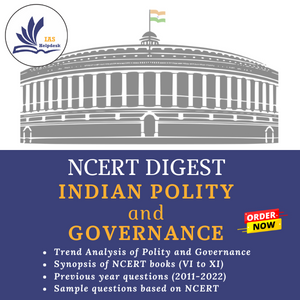What are Sponge Cities?
Description
What are Sponge Cities?
Description: Exploring
Sponge Cities: Enhancing Urban Resilience to Flooding and Water Management. Learn
about the innovative 'sponge city' concept, India's initiatives, and the
challenges in creating urban areas that effectively manage rainwater and
prevent flooding.
Introduction
The Sponge City initiative was launched in 2015 in China to boost flood resilience in major cities and make better use of rainwater through architectural, engineering and infrastructural tweaks.
What are ‘sponge cities’?
· The term “sponge cities” is used to describe urban areas with abundant natural areas such as trees, lakes and parks or other good design intended to absorb rain and prevent flooding.
· It has been designed to make greater use of lower-impact “nature-based solutions” to better distribute water and improve drainage and storage.
· It also includes the use of permeable asphalt, the construction of new canals and ponds and also the restoration of wetlands, which will ease waterlogging along with improve the urban environment.
Steps taken by India for sponge cities
· Swachh Bharat Mission (Urban): focused on sanitation, this mission emphasizes solid waste management and pollution control, which contribute to preventing waterlogging and flooding.
· National smart cities mission: it promotes the measures to manage urban flooding through rainwater harvesting,green spaces and proper drainage system.
· Atal Mission for Rejuvenation and Urban Transformation (AMRUT):The Mission focuses on development of basic infrastructure, in the cities and towns, in the sectors of water supply; sewerage and septage management; storm water drainage.
· Guidelines and Regulations: The government has issued guidelines for sustainable urban development, encouraging the incorporation of features like permeable pavements, green roofs, and retention ponds to enhance water absorption.
Limitations of sponge cities
The sponge city infrastructure capacity is 200 millimeters (7.9 inches) of rain each day. They may also encounter difficulties due to significant upfront expenses for infrastructure modifications, the need for maintenance, and potential interruptions during development. Furthermore, variables like climatic fluctuation and urban growth trends may affect how successful they are.
Here is the link to the article on PM VISHWAKARMA’ SCHEME

